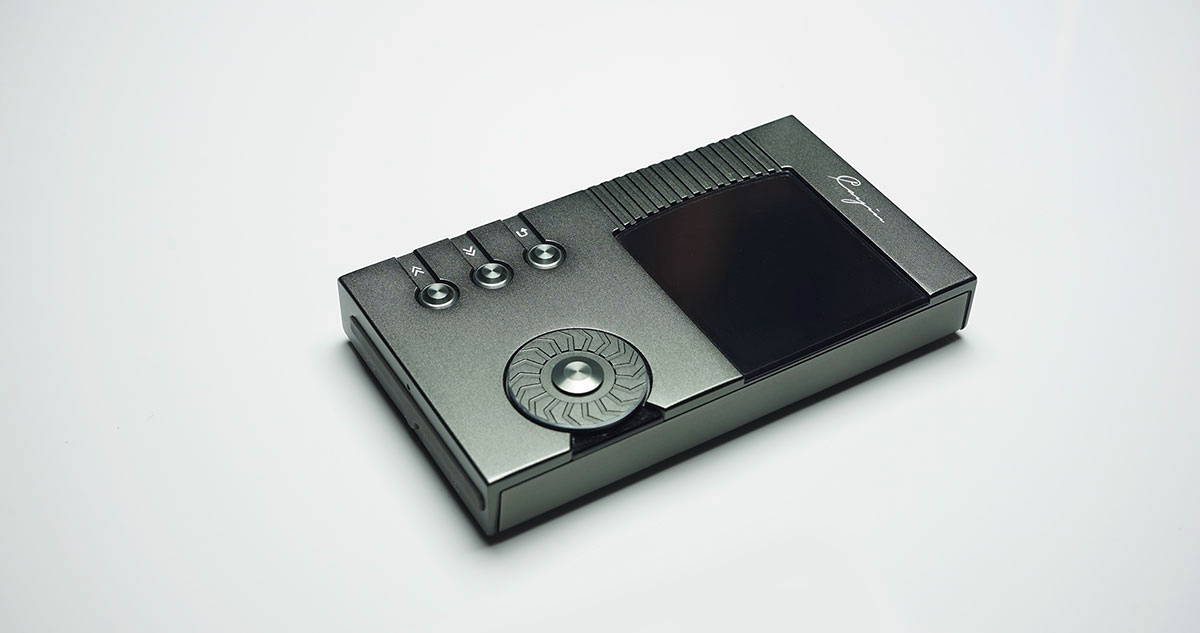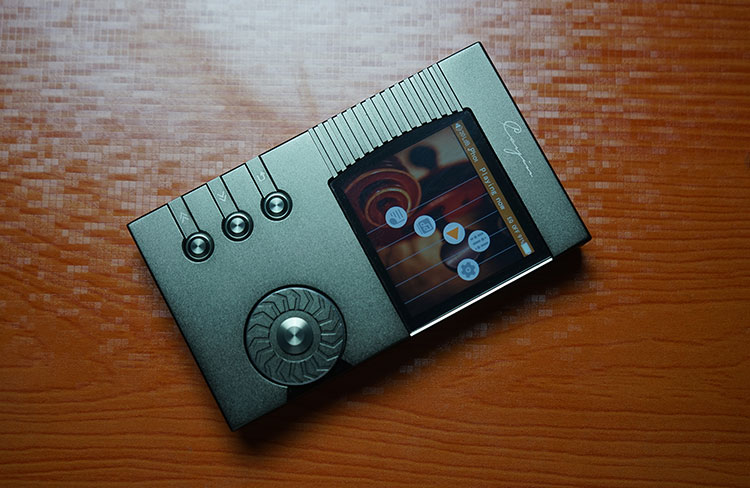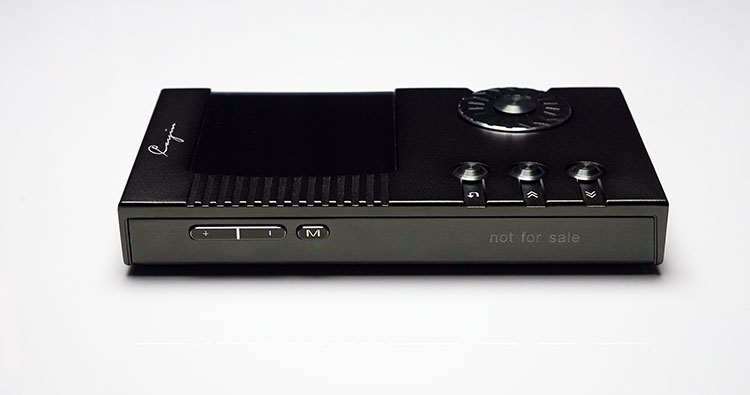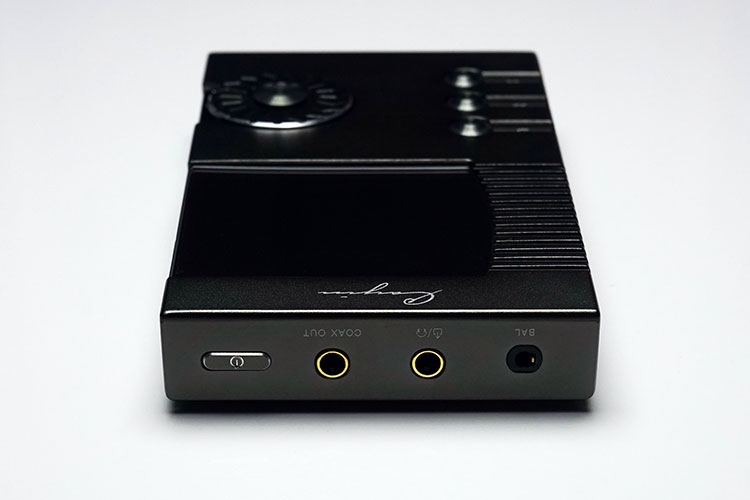In this feature, we review the Cayin N5, which is a new portable digital audio player, (DAP), with an upgraded OS and an AKM DAC chipset inside. It is priced at $345.
Disclaimer: This sample was sent to us for our honest opinion. Headfonics is an independent website with no affiliate links. We thank Cayin for their support.
You can click here to learn more about Cayin products that we have previously featured on Headfonics.
Please note, that this article follows our current scoring guidelines which you can read here.
Almost exactly a year ago I reviewed the Cayin N6, which was, and still is, the flagship DAP from this respected Chinese audio manufacturer.
At around $600 it sounded neutral, smooth, clean, and an all-around excellent if slightly analytical sound. It set a pretty tough hurdle for a lot of companies to jump if they were going to produce something better for the same or lower price.
However, the N6 was not without its quirks and I did mention that it had a “love or loathe it” design and compared to other DAPs it is quite big to hold and use.
The screen was relatively small also for the size and in the era of touchscreen Android-based UI such as the X7 from FiiO, it looked slightly dated.
It also didn’t seem to get enough exposure in the big markets for it to be the go-to DAP at this price range and some of its glory has been stolen already.
AK still reigns supreme media-wise with the AK Junior and the new mid-tier 100 and 200 units. Also, FiiO launched the X7 for a few bucks more which has a rock-solid vanilla Android experience including WiFi, BT, and streaming. Time does not stand still and thankfully neither has Cayin.
What’s the Pitch?
Cayin has made a bid for the lower end of the mid-tier DAP market currently populated by the likes of FiiO’s X3/X5ii, the Hidizs AP100, iBasso’s DX80, and to some extent the Alien by Shozy. To that end the N5 represents the next rung down from the flagship N6 but, it seems a DAP that has been reworked with a lot of user feedback slipped inside.
It is priced also at a very tempting $345, looks much more like a regular DAP, and packs some modern tech and audiophile needs right in there such as dual memory card slots, balanced output, and USB 3.0.
It also retains a lot of the codecs that its bigger sibling has such as DSD128 native decoding and most importantly, a tonality that I believe a lot more people shopping in this price range will get more immediate enjoyment out of.
The N5 feels like a qualified response to its potential audience as well as a pitch for the sweet spot in the performance-to-price ratio for portable players.
Design
It looks nothing like the N6 and more like a “normal” box-shaped DAP. So it loses that very memorable physical shape of the N6 but what it loses I think it gains in easier handling. It is a more familiar design in that respect and therefore a lot easier to understand.
It is much smaller than the N6 for a start, roughly the same size as the FiiO X5ii measuring in at 11.1 x 6.4 x 1.64cm. That is about 1.5cm shorter, 0.5cm less tall, and almost 2cm thinner than the N6.
However, weight-wise it’s just 30g less than the N6. That is not a lot of weight shaved off so despite its more diminutive size and shape it does feel a lot “denser” than the N6. Put it this way the FiiO X5ii weighs 30g lighter than the N5 but with almost the same dimensions (perhaps not as tall).
This means the N5 feels incredibly solid and no doubt this is in some way due to a large amount of tech options (including a large battery) inside the casing, but also due to the hefty aluminum casing, Cayin has used for the chassis.
The chassis still has a slightly sharpish feel to the edges though and not quite as rounded as a FiiO X5ii to the touch as well as the joint lines being a touch more prominent than competing DAPs.
The finishing though is very solid with no rough edges or machine cuts and the scroll wheel, albeit a bit slow in operation, feels solid.
Front Panel
The screen is also off-center to the right of the front panel with a little bit of ribbed aluminum visual flair to the left presumably for an enhanced grip in your hand.
Below this once again you have an offset of physical controls which, for my smallish hands, could do with being a tiny bit closer to each other for single-handed operation.
On the far left you have the playback controls which double up on menu operation and on the far right you have the mechanical scroll wheel which carries a large part of the UI navigation duties.
Technically I can reach both with one hand but I do find myself making minor adjustments in how I grip it as I switch from wheel to button so it is not as fluid as I had hoped. If the wheel was more central then things would get a little easier.
It’s also a heavy mechanical wheel so unlike say the X5ii you can’t simply brush your finger around the wheel to get it to work, you have to push the wheel round.
Screen
I noticed a lack of information regarding the screen on quite a lot of spec sheets for the N5 which is unusual, but compared to the X5ii and N6 it does seem to use the same screen as the N6 which is a 2.4-inch 400×360 IPS glass TFT screen.
It is a good screen with wide viewing angles and due to the smaller size of the DAP overall, it doesn’t have that “postage stamp” feel like it did on the N6.
Certainly, it has more vibrancy than the AP100 from Hidizs and is easier to read than the iHiFi 700’s larger but duller touchscreen. The colors are a little blander though on the N5 and do not have the same level of pop as say the X5ii LCD screen.
The only time I feel it falls short for information display is when using the media library with long titles. Longer titles go off the screen and you end up having to wait for the automatic scroll function to see what it is you are selecting. Other than that it is much the same as the N6 screen experience.
Side Panels
The right is flush and bereft of any controls except for the area immediately underneath the control wheel which houses a small LED indicator for battery and USB DAC functionality.
On the left side though you have a volume rocker and just underneath a Menu button (“m”) which gives you some control over the core settings when not in playback and some additional functionality on the left side of the screen during playback much like clicking the jog dial on the N6.
Top and Bottom Panels
The N5 sports a heck of a lot of interesting inputs and outputs on the top and bottom. On the top, you have the new balanced output mode, jack/line out, and coaxial digital outputs and to the far right you have the power/LCD screen on and off button.
On the bottom panel, underneath a very long rubber flap, you have dual memory card slots and the USB 3.0 slot (2.0 backward compatible). Just above the flap in a central position is the hardware reset pinhole which, thankfully, I have never had a reason to use during my time with the N5.
The flap itself sits out slightly from the panel so it’s not flush and it won’t sit upright as a result. It’s not intrusive and there is a nice symmetrical feel to its design but equally, I think sans flap would have been even better or just one or two over the memory cards.
I have always liked the slider guard on the AK100/120 memory slots when they first came out and would love to see more of this functionality than rubber flaps due to their debatable long-term robustness. There is always a concern that eventually the flaps will rip and fall off.
Back Panel
Much like the N6 the N5 sports a carbon fiber finish on the back panel though unlike the N6 it does not completely cover the entire back panel as the bottom and top portions fall away at a slight angle, unlike the flush flat back of the N6. It looks good but not quite the same impact as the N6 more complete design.
Accessories
Packed with the N5 you receive quite a few accessories though in this kit no silicone case was included which, according to the manual should be available in the standard retail package. A good thing too as although the N5 is a solid piece of hardware it could do with some protection against knocks and scrapes.
What you do get is a standard USB 3.0 to micro-B 3.0 cable, a short coaxial conversion cable much like the FiiO and iBasso series, a spare screen protector, some warranty information cards, and a very nice and detailed user manual in dual language (Mandarin and English).
For your convenience one screen protector is already on the N5 screen; simply peel back the top layer and you are good to go (stage 2). If the USB cable is a bit big then the good news is that it is fully backward compatible with USB 2.0 standards meaning you can stick any combination of short cables into the N5 and it will work just fine.
Functionality
Outside of the AK Junior and a few other cheap touchscreen DAPs the majority of audio players in this price range are predominantly hardware and physical button-based and the N5 is no different in that respect.
Players in this range do seem to follow the same holistic experience in terms of operation and build with an emphasis on hardware controls such as jog wheels and playback buttons to the left and right with inputs and outputs to the top and bottom.
The N5 also functions as a more than capable standalone DAC decoder with codec rates of up to DSD128 with native output via both analog and digital outputs. What impressed me the most about the N5 was the ability by Cayin to retain most of the features of the N6, albeit with a slightly different chipset.
DAC
The Cayin N6 utilizes an Ingenic Semiconductor JZ4760B – SA2000 processor which if you are eagled-eyed enough will notice that it is the same processing architecture used in their flagship N6 as well as being used by FiiO in their X5ii DAP.
Where the two part ways though is in their choice of DAC. Whereas FiiO stuck with the PCM1792A, Cayin opted for a 32-bit single AK4490EQ for the N5. If you will note the PCM1792A is used by Cayin for their flagship DAP, the N6.
Cayin has opted to implement the DAC chip to officially support up to 24-bit/192k but interestingly if you hunt around this chip is listed as being capable of handling up to 32-bit 768k and has an edge over the older PCM1792A which tops out at 24-bit.
It is certainly a newer and more modern chip than the PCM1792A and once again brownie points if you spotted that the Astell & Kern also uses an AK4490 in dual mode for their top-of-the-line AK 380 DAP. It is not a DAC chip to be sniffed at.
Codec handling on the Cayin N5 is pretty impressive and even with the N5 coming in at almost half the price of the N6 it can handle pretty much the same lists of codecs and rates.
The N5 can also operate as a standalone DAC for PCs and Macs with a simple plug-and-play for MACs and drivers for PCs. Once connected the N5 will go into DAC mode on the main screen reporting back the sample rate of any track you are playing on the screen.
One thing to note though is the unsigned nature of the Windows drivers meaning by default on Windows 10 64BIT you cannot install without turning off driver signature enforcement at the bootup options screen.
Amp
This is one of the big selling points of the new N5 with the inclusion of a balanced-out option, which for many, is ‘mana’ at this level. The Cayin N5 internal amp is rated at 200mW into 32 ohms single-ended and a further 300mW in balanced mode also at 32 ohms.
The amp itself is powered by a quad Texas Instruments BUF 634U driver design which has been used in excellent amps such as the PB2 from iBasso and more recently in the FiiO AM2 module (though less than 4). Let’s not forget also it is the same buffer driver used in the flagship N6 so kudos to Cayin for not skimping here on the amp.
It should have plenty of power for most portable headphones of reasonable ohm and power requirements though may not be enough for high-resistance dynamic headphones and the more powerful planars to sound well-driven.
At 108db SNR, the N5 could be a hit or miss for driving IEM and much will play on the sensitivity of the IEM itself but on paper, it should have the chops for efficient IEMs.
Battery
The N5 uses a slightly smaller 4200mAh 3.7V Li-poly battery to the N6’s 5600mAh battery rating yet the playback time on the N5 is rated at 9 hours over the shorter playback time of the N6 which is rated at just around 8 hours or less.
Unlike the N6, the N5 does not get as warm as the N6 under extended usage but like the N6, the battery is not user-replaceable.
I did mention during the N6 review that this is an area that could be worked on so I am glad the rating is improved by 1-2 hours even though they have opted to use a smaller battery rating. There seems to be some good optimization there.
Memory
This time, Cayin has opted to drop the use of onboard SSD memory. Technically, I suspect that is where the battery gets a considerable boost and operationally it drops a heck of a lot of materials costs considering tSD is more expensive than regular flash memory.
Of course, that means the total cost of ownership of the Cayin N5 on the customer goes up as a result of having to buy some microSD cards to slot into those dual memory slots. Yes, it can hold up to 256GB microSD but those do not come cheap.
This places the N5 on the same level as the FiiO X5ii with regards to memory capacity with both opting out of onboard memory and instead including high capacity dual microSD slots. As a footnote, the N5 at this time does not support OTG.
Click on page 2 below for software impressions











